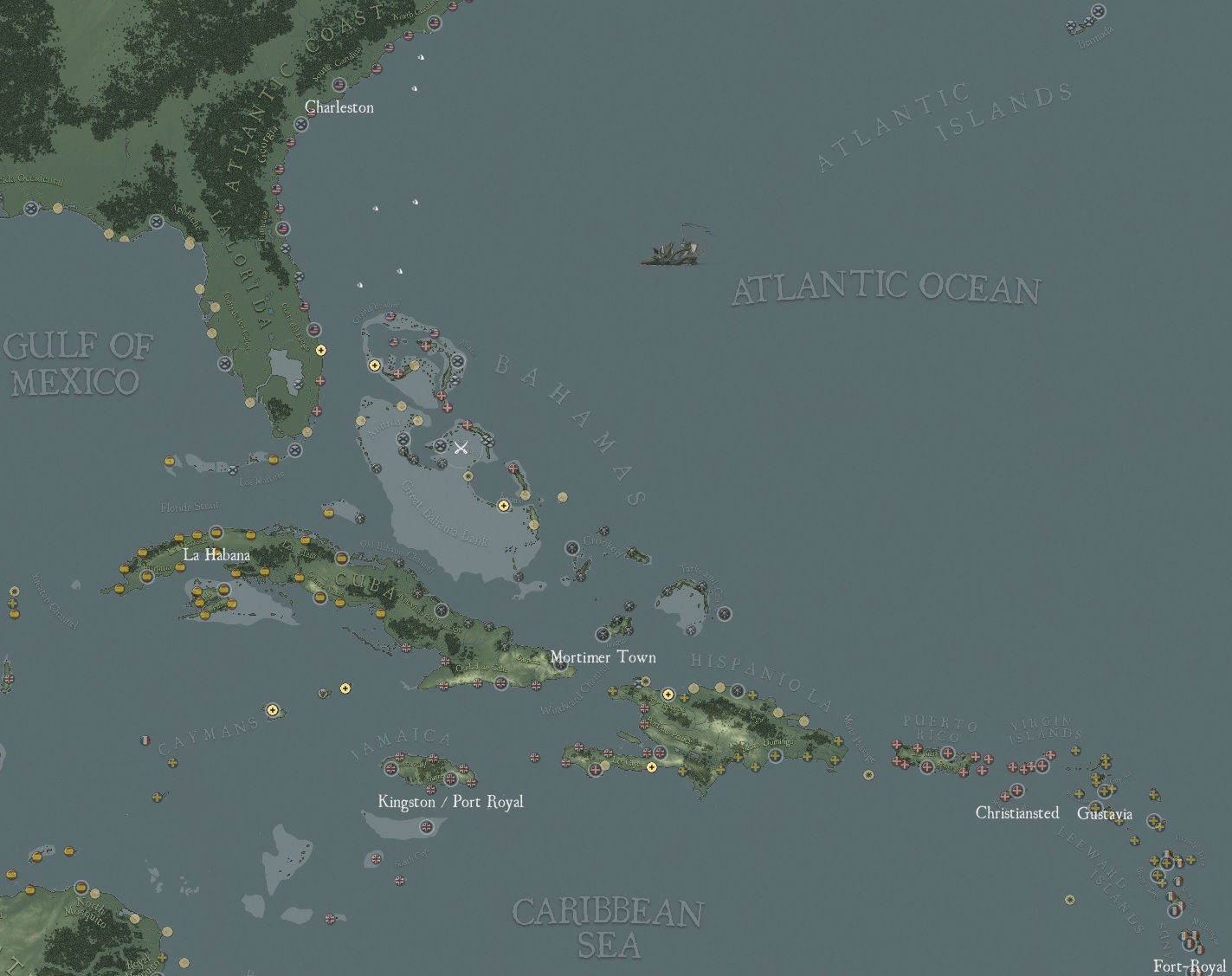 |
The War of 1821 |
 |
|
1821, Florida & the Caribbean. A Privateers and Gentlemen Campaign Premise and Zero Point: The 1819 treaty of Adams-Onis. The Adams–Onís Treaty (Spanish: Tratado de Adams-Onís) of 1819, also known as the Transcontinental Treaty, the Florida Purchase Treaty, or the Florida Treaty, was a treaty between the United States and Spain in 1819 that ceded Florida to the U.S. and defined the boundary between the U.S. and New Spain. It settled a standing border dispute between the two countries and was considered a triumph of American diplomacy. It came in the midst of increasing tensions related to Spain's territorial boundaries in North America against the United States and the United Kingdom in the aftermath of the War of 1812. Florida had become a burden to Spain, which could not afford to send settlers or garrisons, so the Spanish government decided to cede the territory to the United States in exchange for settling the boundary dispute along the Sabine River in Spanish Texas. The treaty established the boundary of U.S. territory and claims through the Rocky Mountains and west to the Pacific Ocean. The treaty remained in full effect for only 183 days: from February 22, 1821, to August 24, 1821, when Spanish military officials signed the Treaty of Córdoba acknowledging the independence of Mexico; Spain repudiated that treaty to concentrate on the holdings they had left in the Caribbean. The United States claimed Florida outright in September and war was declared. With the Hurricane truce of September 1821, Spain conceded Florida to the United States. The Spanish, French and The United States have ceased hostilities and formed the American Bourbon Alliance against the British Hapsburg Alliance to fight for control of the Bahamas.
1822, The Bahamas With Florida and the Caribbean settled in 1821, the war shifts to the Bahamas.... |
||